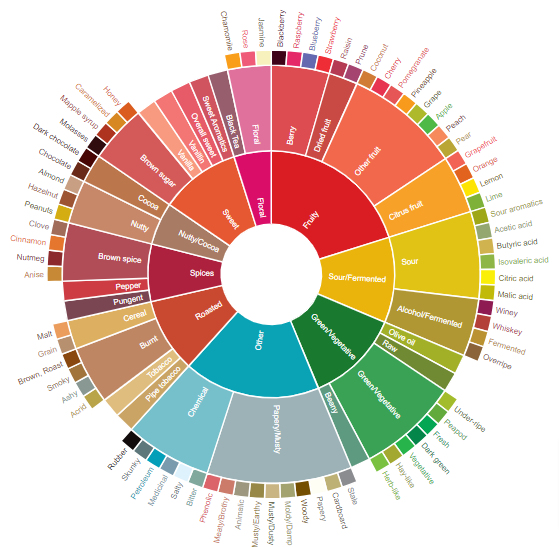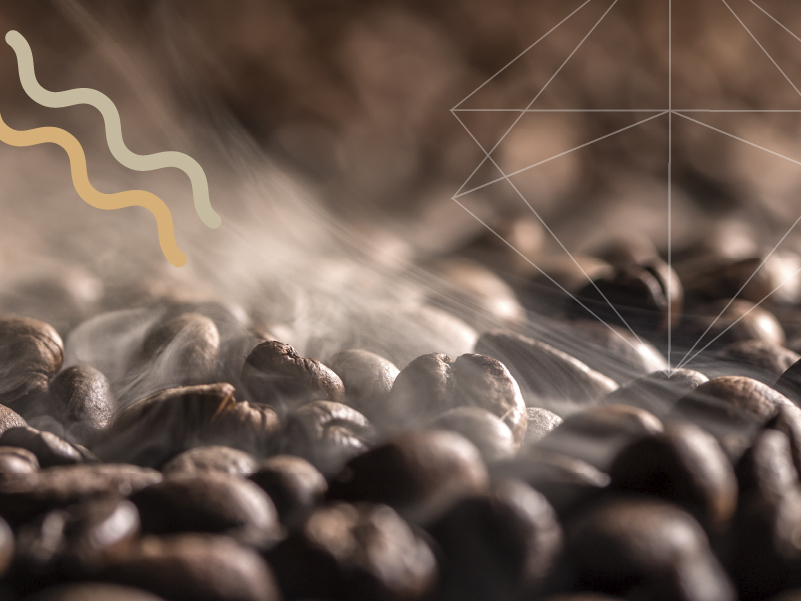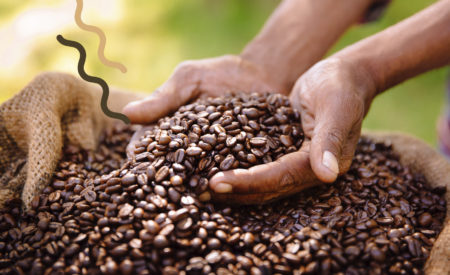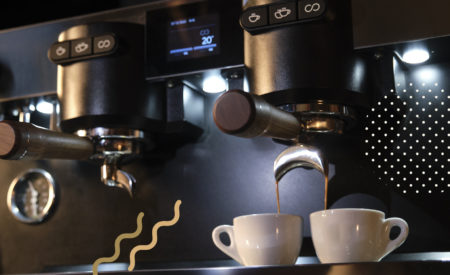Our senses are capable of picking up and isolating hundreds of aromatic gradations. Genetics may give some people more refined senses, but often the ability to recognize different coffee aromas is a matter of training and practice.
Taste, smell or aroma?
Outside of official contexts, it may happen that we misuse the words taste or aroma to describe coffee. Instead, it is important to remember that we experience taste through our taste buds and smell through our direct sense of smell. Aroma, on the other hand, involves the nose and palate together, especially in the retrohaling phase, when both are involved.
What the aroma depends on
Some coffee aromas are specific characteristics of the plant and depend on variety, soil and altitude of cultivation. Others, on the other hand, are developed during processing, in particular aroma can be affected by the drying and roasting phases. Once the coffee reaches shops, it will be up to the barista to best preserve the aromas by paying attention to bean preservation, grinding, and extraction.
What is the Coffee flavor wheel
The Coffee Flavor Wheel is one of the most useful tools for best describing the flavor notes of a cup of coffee. Developed by The Specialty Coffee Association of America, in collaboration with World Coffee Research, it offers a standardized reference vocabulary for professional coffee tasting.

Sweet
This is mainly related to the simple sugars in coffee and can change depending on origin, variety, degree of roasting, and even the type of water used. Naturally sweet coffees do not need sugar, which would otherwise cover up their natural characteristics.
Floral
The flower aroma is subtle, fresh, spring-like, and difficult for the inexperienced to perceive. It is most easily found in coffees that come from Brazilians plantations.
Fruity
This option describes coffees with hints reminiscent of fresh or dried fruit. It is one of the most sought-after flavors and is often found in beans that come from hot climates, mostlyAfrica or Central America.
Acid
This is one of the first characteristics that the palate recognizes, and it’s determined by the ratio of acids to sugars in the bean. It is typical of plants grown at altitudes above 1,000 meters.
Grassy
An aroma reminiscent of plants or fresh grass is described with this term. It may be related to the origin of the beans or the result of a light roasting.
Toasted
While it is an adjective often used to describe coffee in general, it actually refers to particular notes reminiscent of the flavor of cereals or toasted bread and even hints of tobacco.
Spicy
A spiced coffee offers unusual sensations on the palate, reminiscent of pepper, ginger or cinnamon. The best-known varieties come mainly from parts of Africa.
Cocoa
This term describes coffees with warm notes, reminiscent of chocolate or hazelnut. Such varieties with natural cocoa notes usually come from India, Indonesia and Java.





